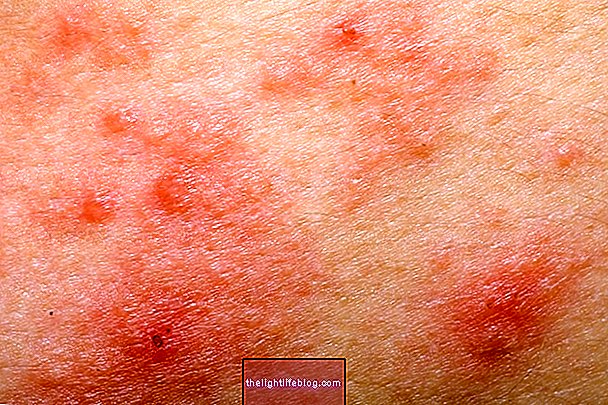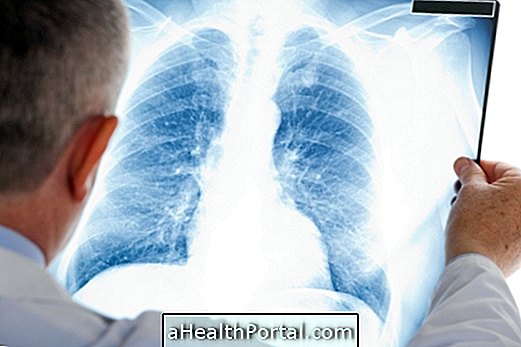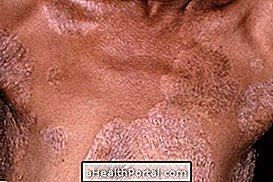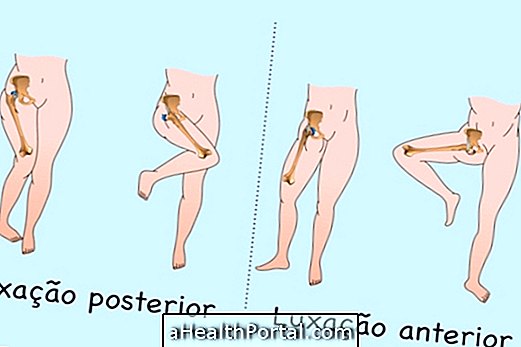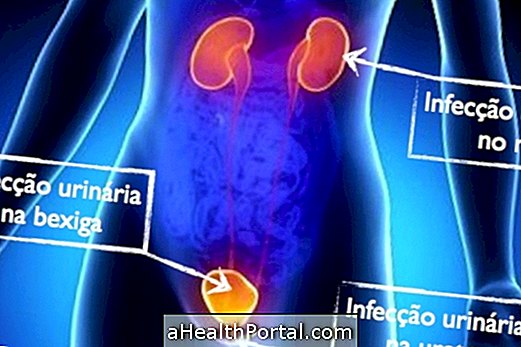Purple is a rare problem characterized by the appearance of red patches on the skin and does not disappear when pressed, being caused by the accumulation of blood under the skin due to the inflammation of the blood vessels. Purple is more common in children, but it can appear at any age.
The onset of purpura may be due to several situations and, depending on its cause, treatment may or may not be necessary. Usually in children, purpura disappears without any specific treatment, while in adults it can become a chronic problem and may appear or disappear in periods.
It is important to consult a dermatologist or general practitioner when the symptoms of purple begin to appear so that it is possible to identify the cause and start treatment if necessary.
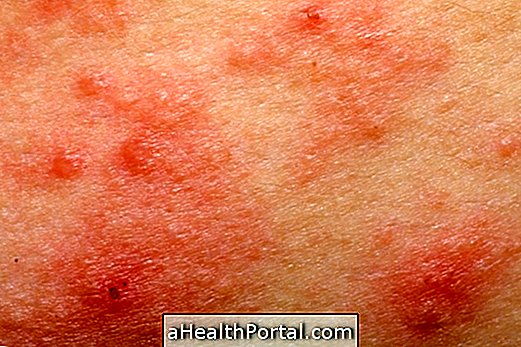
Types of purple
1. Purple of Henöch-Schönlein
Henöch-Schönlein purpura, also known as PHS, is the most common type of purple in children under 10 years old and is characterized by inflammation of small vessels, leading to the appearance of red patches, especially in the legs and glutes, and lead to pain in the joints or abdomen. Get to know other symptoms of the purple of Henöch-Schönlein.
How to treat: Usually PHS does not require specific treatment, and it is only important that the person is at rest and accompanied by the doctor to evaluate the progression of the symptoms. However, when there is a lot of pain, the doctor may prescribe the use of anti-inflammatories or analgesics, such as Ibuprofen and Paracetamol, to relieve pain.
2. Idiopathic thrombocytopenic purpura
Idiopathic thrombocytopenic purpura or ITP is an autoimmune disease characterized by a decrease in the number of platelets, interfering with the coagulation process and leading to the formation of small red spots on the skin and bleeding from the nose. The diagnosis is mainly made through the analysis of symptoms and the blood test, which in these cases indicates less than 10, 000 platelets / mm³ of blood.
How to treat: The treatment for ITP is done according to the severity of the symptoms, and it may be recommended to use drugs that decrease the function of the immune system, avoiding a reaction against the body itself, injection of immunoglobulins or medicines that stimulate the immune system. platelet production, such as Romiplostim, for example. Learn more about what PTI is and how treatment is done.
3. Thrombotic thrombocytopenic purpura
Thrombotic thrombocytopenic purpura or TTP is a rare type of purpura that is more common in the 20s and 40s. This type of purpura is characterized by increased platelet aggregation, leading to the formation of thrombi and causing erythrocytes to rupture. Thus, it is important that PTT is quickly identified and treated as quickly as possible to avoid anemia, platelet loss and neurological changes.
How to treat: Treatment for PTT should be started as soon as possible, and plasmapheresis is usually recommended, which corresponds to a blood filtration process in which excess antibodies that may be impairing the functioning of the body and the circulation removed.
4. Fulminating purpura
Fulminant purpura arises primarily in the newborn due to the lack of coagulation-related proteins, which leads to clots that may hinder blood circulation and lead to the appearance of red patches on the skin that may become black due to the death of cells at these sites.
In addition, this type of purpura can be triggered by bacterial, viral or parasitic infections, for example.
How to treat: Treatment for fulminant purpura can be done by administration of coagulation protein absent in blood according to the physician's guidance.
5. Senile purpura
This type of purpura is characterized by the appearance of purple spots on the back, wrists, hands and forearms due to skin aging, and is therefore more common in people 65 and older.
How to treat: The senile purpura does not need to be treated, since it poses no risk to health and is not indicative of bleeding. However, if you feel uncomfortable, you can use some types of creams or ointments with vitamin K that help reduce blemishes and should be indicated by the dermatologist.
Here's how to get the 8 most common skin blemishes.

How is the treatment done?
Treatment for purple depends on its cause, but is usually done with the use of vitamin K-rich creams such as Thrombocid, which should be spread on the skin until the spots disappear.
In the most severe cases, the ingestion of corticoid remedies, such as hydrocortisone or prednisone, or surgery to remove the spleen, in the case of thrombocytopenic purpura may be indicated, since it is in this organ that antibodies are produced that can destroy the platelets, provoking the accumulation of blood on the skin. In children, infants or newborns, purple may disappear without treatment, but for adults treatment is always necessary.
Main symptoms
The most common symptoms of purpura include:
- Red spots on the skin - Know other causes of red spots on the skin;
- Red dots all over the body;
- Bleeding from the nose, intestines, gums or urinary tract;
- Spot spot pain;
- Fever.
In most cases, only small spots appear on the skin and usually do not require treatment.




